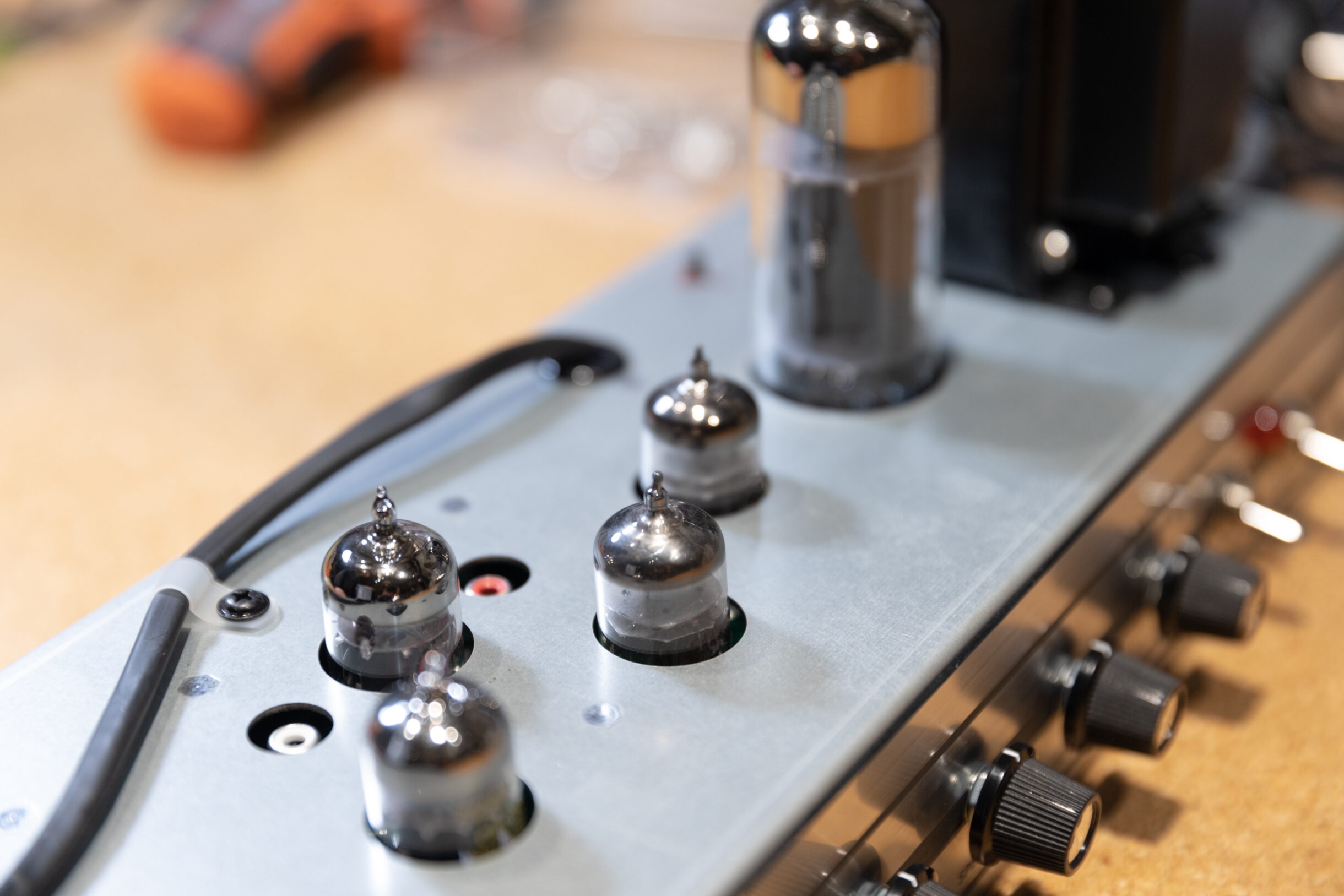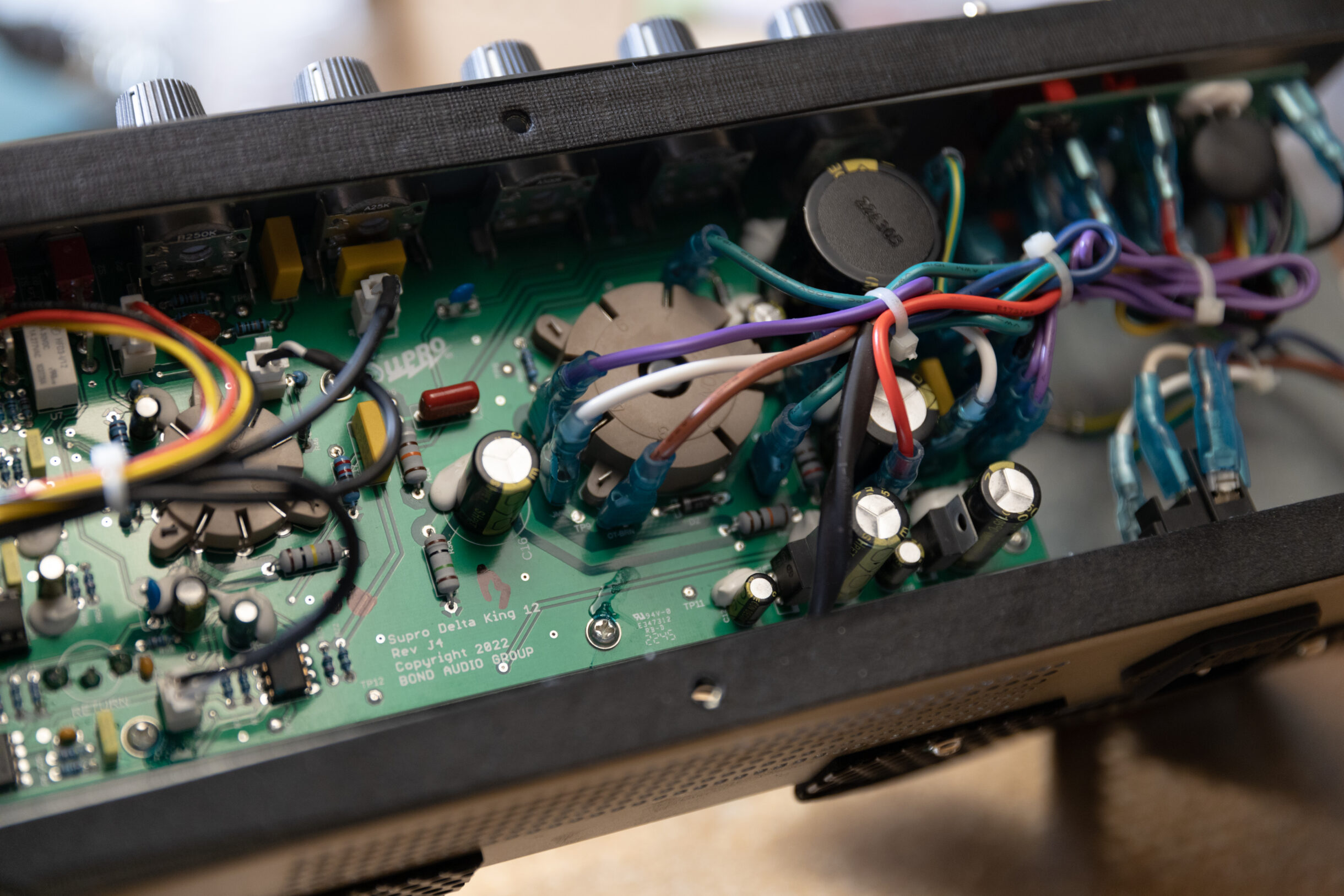Back to all news

News
05/26/2023
Why Tube Amps?
Tube amplifiers have been used by musicians for decades due to their unique sound characteristics. Supro is best known for its vintage-inspired tube amps that can be heard on landmark recordings by iconic artists such as Led Zeppelin, the Rolling Stones, Aerosmith and David Bowie. Creating modern-day amps that still capture this classic tube tone remains a top priority for our brand today.
“During the mid 50’s, as blues and country music were mixed together to create the rebellious noise known as rock & roll, Supro tube amps were on the scene. Bright but not harsh, warm but not muddy, and fat yet not bloated, Supro amps have a unique tone that helped define the sound of rock guitar at its moment of inception. It was the music played on these early, Chicago-made tube amps that inspired a generation of British bands which began emerging in the mid 60’s and still dominate the rock & roll playlists of today. In the same way that the sparkle of a Fender, the chime of a Vox, the headroom of a Hiwatt and the outrageous gain of a Marshall are all instantly recognizable, the signature mid-range growl of a Supro holds its own place within the pantheon of historic tube amp tones.” – Dave Koltai, CTO, Bond Audio

The Evolution of Tube Amps
Supro amplifiers are among the earliest examples of a tube amp made expressly for amplifying the electric guitar. The earliest models, built in the mid 1930’s, generated about 5-Watts using a single-ended (one power tube) Class A design pushing an 8” or 10” field-coil speaker. These primitive designs matured over the ensuing decades as tube technology and manufacturing process were improved, culminating in the golden era for vintage Supro tube amps during the electric guitar boom of the late 1950’s and early 1960’s. During that time, Supro continued to manufacture basic single-knob designs but also branched out to include new features like reverb, tremolo and even an attempt at electronic pitch vibrato. This period also saw the emergence of more powerful tube amplifiers that made use of two or even four power tubes pushing a single 15” or a pair of 12” speakers. These later tube amps came in a variety of form factors, including a series of “piggy back” heads with standalone speaker cabinets. Supro even made an auxiliary tube reverb unit with its own built-in, dedicated speaker for the spring reverb effect. Despite the emergence of far more efficient means of amplification that have been adopted for use in nearly every other industrial application, tube amps continue to represent the gold-standard of guitar tone throughout the world. Even the most sophisticated digital amplification products available today strive to emulate the coveted sound and feel of vintage tube amplifiers.
How Do Tube Amps Work?
In a guitar amp, the strength of the signal coming from the pickups on the guitar determines how many electrons are allowed to flow from the negatively charged side of the tube to the positively charged side of the tube. This is done by connecting the guitar pickups to the “grid” of the tube which is a piece of metal that sits in between the negative and positive sides of the tube. In this way, the tiny bit of AC voltage that comes out of a guitar pickup when you pluck a string is transformed into a much larger signal as it determines how much current is flowing through the tube at any given moment. To complete the circuit, the positive side of the tube gets hooked up to a transformer which allows it to drive a speaker that produces audible sound. When you turn the volume way up on both the guitar and the amp, a whole lotta electrons are allowed to flow and things get LOUD!

There are several reasons why musicians might prefer tube amplifiers over solid-state or digital alternatives:
Warm and Rich Tone: Tube amplifiers are known for producing a warm, rich, and natural sound that many musicians find pleasing. The harmonics and overtones produced by tube amplifiers can add depth and complexity to a musician’s sound, especially when playing clean or lightly distorted tones. The Delta King 12’s single-ended Class A tube power amp provides raw tonal characteristics and remarkable touch sensitivity features, all while delivering a full 15 watts of 6L6 tube power.
Dynamic Response: Tube amplifiers have a dynamic response that changes depending on how hard the musician plays. This means that the amplifier can produce a wide range of sounds and textures, depending on the player’s style and technique. This can be especially useful for guitarists who want to create a range of tones from clean to heavily distorted. The preamp found in the Amulet delivers warm, blooming clean sounds up to ‘noon’ on its volume knob. Past noon, its voice rolls into classic Supro crunch, giving way to a singing, violin-like overdrive at full volume. The Amulet is remarkably high-gain for a vintage-inspired amp, but offers a sweet spot that is not overwhelmingly loud.
Distortion: Tube amplifiers produce a unique type of distortion that many musicians find desirable. Unlike digital or solid-state amplifiers, tube amplifiers can produce a natural and organic distortion that can be used to add character and texture to a musician’s sound. The Black Magick Reverb Combo embodies the all-tube snarl and sweetness that define the Supro sound.
Versatility: Tube amplifiers can be used for a wide range of musical genres and styles. They are often used in blues, jazz, rock, and metal music, but can also be used for country, funk, and other styles. Guitarist Lenny Kravitz uses the Black Magick Reverb Combo to achieve a “pure, natural sound” when recording his albums. Brandon “Taz” Niederauer likes the Delta King 12 because of its countless tonal options.
Aesthetic Appeal: Tube amplifiers have a classic and vintage aesthetic that many musicians find appealing. The glowing tubes and retro designs can add to the ambiance of a performance or recording session. Supros have a signature look that stands out, but never detract from the performance.
Overall, tube amplifiers can offer a unique and desirable sound that many musicians prefer. Tube amplifiers do require maintenance and care, but many musicians believe that the benefits are worth the extra effort. As do we.
